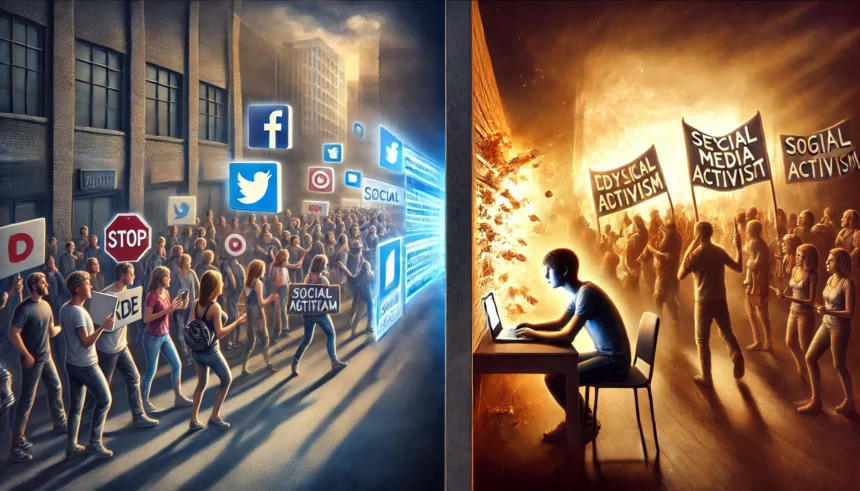The Power and Limits of Online Activism
On November 4, 2023, protestors gathered in Provo, Utah, for the “Utah County Stands with Palestine Ceasefire” protest. This event highlighted a significant shift in how Generation Z engages in political activism—primarily through social media. While this digital activism is innovative, experts are questioning its real-world impact.
The Viral Impact
One notable example of this digital activism is the viral “All Eyes on Rafah” AI-generated image, which has been shared over 50 million times on Instagram. Created by Instagram user @shahv4012, this image aims to highlight the Israeli airstrikes that killed at least 45 displaced people in Rafah, Gaza. The widespread sharing of this image demonstrates a strong show of support for the Palestinian people.
However, the effectiveness of such posts is under debate. Aaron Skabelund, director of the BYU Office of Civic Engagement, expressed skepticism about the impact of solely online activism. “Unless people are willing to physically and personally go out and interact with people, I’m not sure it will be all that effective,” he said.
Beyond the Screen: Calls for Deeper Engagement
Sama Salah, president and co-founder of the Arab Student Association at BYU, advocates for deeper engagement beyond social media posts. She believes that educating oneself and others is crucial for meaningful activism. Salah suggests practical steps like:
- Asking informed friends for guidance
- Following journalists on the ground
- Contacting representatives to influence policy
- Donating to affected families
Salah stresses that supporting movements like peace in the Middle East should not be reduced to a trend but recognized as essential.
Celebrity Voices and Public Reactions
The October 7, 2023, attack by Hamas on Israel, which resulted in over 250 deaths, also saw a surge in social media activism. Many celebrities, including Gal Gadot, Dwayne “The Rock” Johnson, and Madonna, posted in solidarity with Israel. While these posts raised awareness, they also sparked backlash, revealing the divisive nature of social media activism.
The Complexity of Online Discourse
The simplicity of social media often fails to capture the complexity of political issues. Skabelund points out that social media can paint issues in black and white, losing the nuances necessary for a civil and informed discussion. This can lead to performative activism, where actions are more about appearance than impact.
The Role of Social Media in Movements
The Black Lives Matter movement in 2020 saw a similar pattern of social media activism. The #blackouttuesday initiative, where users posted black squares to show solidarity, received mixed reactions. While it garnered attention with over 11 million posts, it also faced criticism for being performative.
Isabel Martinez from the BYUSA Women of Color Club believes that trending hashtags can be effective in spreading information quickly and raising awareness. However, Arianna Jenks, the club’s secretary, acknowledges the bias in social media feeds and the danger of being exposed only to like-minded opinions.
Moving Forward: Effective Activism
For political activism to be truly effective, it must go beyond social media. Skabelund encourages people to engage in traditional media and participate in physical protests. The General Handbook for The Church of Jesus Christ of Latter-day Saints supports involvement in peaceful, legal protests and political activities.
Sama Salah emphasizes that even social media posts can contribute by keeping issues in the public eye, urging people to care about global suffering.
Conclusion
Social media activism is a powerful tool for raising awareness, but it should be the beginning, not the end, of political engagement. True activism involves educating oneself, participating in real-world actions, and fostering informed, nuanced discussions. By doing so, we can make a genuine difference in the causes we care about.
















